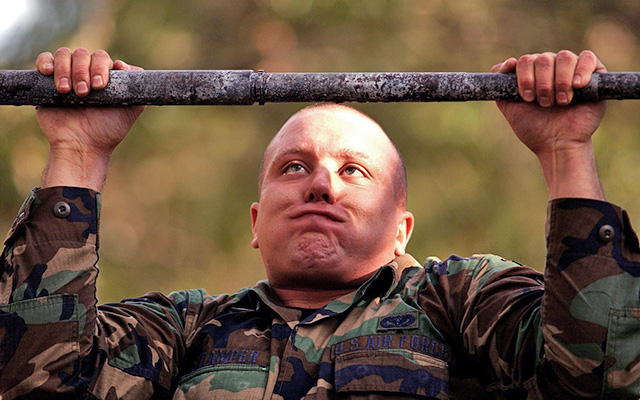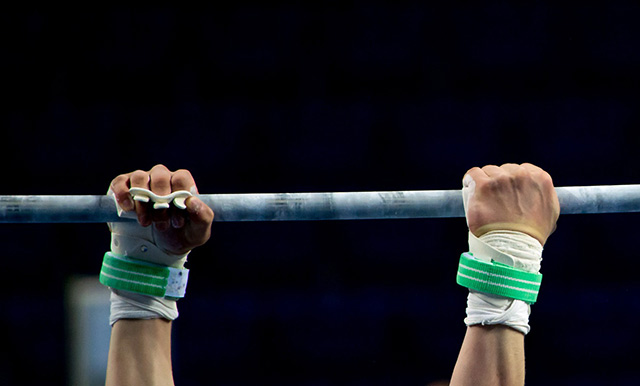For fitness tests that require the participant to grasp a bar, there are several ways in which the bar may be held. The main method the bar can be grasped is either an overhand grip (palms facing away from the body) or underhand grip (palms facing towards the body). Some of the protocols specify which type of grip to use, but other times it is not. The way that the bar is held can make a difference to the fitness testing score, so you should be consistent, and make sure that the type of grip that is used is recorded along with the results.
Underhand Grip
 doing a pull-up with an underhand grip
doing a pull-up with an underhand gripThe underhand grip is when the bar is held with the palms facing towards the body. It can also be called the supernated grip. The thumbs may or may not be wrapped around the bar.
Overhand Grip
 a soldier doing a pull-up with an overhand grip
a soldier doing a pull-up with an overhand gripThe overhand grip is when the bar is held with the palms facing away from the body. It can also be called the pronated grip. The thumbs may or may not be wrapped around the bar.
Mixed Grip or Alternating Grip
 a gymnast holding the bar with a mixed grip
a gymnast holding the bar with a mixed gripThe mixed-grip is when the bar is held with one hand using the overhand grip, the other the underhand grip. This method is less common in fitness testing.
Some fitness tests in which grip is important
Fitness Exercises in which grip is important
About Chin-Ups and Pull-Ups
The terms chin-up and pull-up are often used interchangeably, though some people consider that when using the overhand grip it is a pull up, and when using an underhand grip it is a chin up (see poll).


 Current Events
Current Events